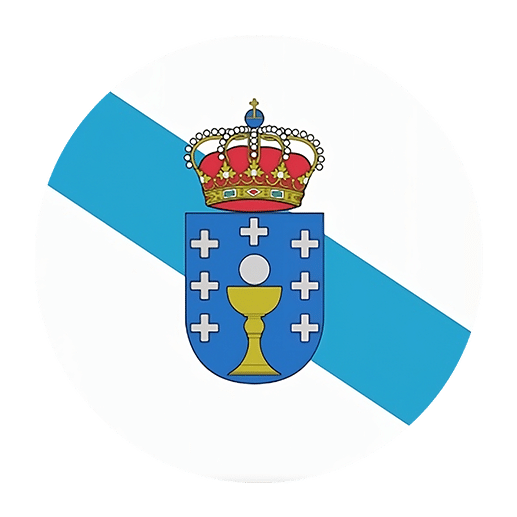The Galician language, one of the Romance languages spoken in the northwestern region of Spain, is rich in its morphological diversity. Among its many fascinating features are diminutives and augmentatives, which are used to convey size, affection, intensity, or emphasis. Understanding these forms can greatly enhance your grasp of Galician and provide deeper insights into its expressive potential. This article will explore how diminutives and augmentatives function in Galician nouns, their formation, and their usage.
Diminutives in Galician
Diminutives are used to convey smallness, affection, or endearment. In Galician, as in many other languages, diminutives can be formed by adding specific suffixes to the base noun.
Common Diminutive Suffixes
The most common suffixes used to form diminutives in Galician are:
– -iño/-iña
– -iño/-iña
– -iño/-iña
The suffix chosen often depends on the gender and sometimes the ending of the noun. Here are some examples:
Example 1:
– “casa” (house) -> “casiña” (little house)
Example 2:
– “neno” (boy) -> “neniño” (little boy)
Example 3:
– “flor” (flower) -> “floriña” (little flower)
Formation Rules
When forming diminutives, certain rules apply:
1. **Gender Agreement**: The diminutive suffix must agree with the gender of the noun. For masculine nouns, “-iño” is used, while for feminine nouns, “-iña” is used.
2. **Phonetic Adjustments**: Sometimes, the base noun might undergo minor phonetic changes to accommodate the diminutive suffix. For example, “papel” (paper) becomes “papeliño” (little paper).
Usage and Nuance
Diminutives are not just about size; they also carry emotional and cultural nuances. Here are some contexts in which diminutives are commonly used:
– **Affection**: To express affection or endearment. For example, “fillo” (son) becomes “filliño” (dear little son).
– **Pejorative**: Sometimes, diminutives can convey a pejorative meaning, indicating something is lesser or inferior. For instance, “problemilla” can suggest a minor or less significant problem.
– **Formality**: In informal settings, diminutives are often used to soften requests or commands. For example, “Ven aquí, por favoriño” (Come here, please).
Augmentatives in Galician
Augmentatives, on the other hand, are used to express largeness, intensity, or emphasis. Like diminutives, augmentatives in Galician are formed by adding specific suffixes to the base noun.
Common Augmentative Suffixes
The most common suffixes used to form augmentatives in Galician are:
– -ón/-ona
– -azo/-aza
– -ote/-ota
The choice of suffix can depend on the noun’s gender and sometimes its ending. Here are some examples:
Example 1:
– “casa” (house) -> “casón” (big house)
Example 2:
– “home” (man) -> “homón” (big man)
Example 3:
– “árbore” (tree) -> “arborón” (big tree)
Formation Rules
When forming augmentatives, similar rules to diminutives apply:
1. **Gender Agreement**: The augmentative suffix must agree with the gender of the noun. For masculine nouns, “-ón” is used, while for feminine nouns, “-ona” is used.
2. **Phonetic Adjustments**: The base noun might undergo minor phonetic changes to accommodate the augmentative suffix. For example, “animal” (animal) becomes “animalón” (big animal).
Usage and Nuance
Augmentatives carry specific connotations and are used in various contexts:
– **Emphasis**: To emphasize size or importance. For example, “traballo” (work) becomes “traballón” (a huge amount of work).
– **Intensity**: To convey intensity or strength. For instance, “golpe” (hit) becomes “golpazo” (a strong hit).
– **Pejorative**: Sometimes, augmentatives can carry a negative connotation, suggesting something is excessive or overwhelming. For example, “problemón” can imply a major or significant problem.
Combining Diminutives and Augmentatives
In some cases, both diminutives and augmentatives can be combined to create nuanced meanings. This combination can create a form that conveys both affection and emphasis.
Example:
– “rapaz” (boy) -> “rapaciñón” (a dear big boy)
This combination, though not as common, shows the flexibility and expressive capacity of the Galician language.
Cultural Context and Usage
Understanding how and when to use diminutives and augmentatives in Galician goes beyond mere grammatical rules. It’s deeply rooted in cultural practices and social interactions. Here are a few points to consider:
1. **Regional Variations**: Different regions in Galicia might prefer different suffixes or use them with varying frequency. Familiarity with regional speech patterns can help in understanding local nuances.
2. **Social Context**: The use of diminutives and augmentatives can signal familiarity, politeness, or social hierarchy. For example, using a diminutive might indicate a close relationship or an attempt to soften a statement.
3. **Literary and Oral Traditions**: Galician literature and folklore are rich in the use of diminutives and augmentatives. Reading Galician poetry, stories, and listening to traditional songs can provide deeper insights into their usage.
Practical Tips for Learners
For learners of Galician, mastering diminutives and augmentatives can be a rewarding endeavor. Here are some practical tips:
1. **Practice with Native Speakers**: Engage in conversations with native speakers and pay attention to how they use diminutives and augmentatives. This real-life practice can help you understand contextual usage.
2. **Read Extensively**: Reading Galician literature, newspapers, and online articles can expose you to a variety of contexts where diminutives and augmentatives are used.
3. **Use Language Learning Apps**: Language learning apps that focus on Galician can provide exercises and examples to practice these forms.
4. **Keep a Journal**: Try writing a journal in Galician and incorporate diminutives and augmentatives. This practice can help reinforce your learning.
5. **Cultural Immersion**: If possible, immerse yourself in Galician culture by visiting the region, attending local festivals, and participating in cultural activities.
Conclusion
Diminutives and augmentatives are integral to the expressive richness of the Galician language. They allow speakers to convey nuanced meanings, emotions, and cultural subtleties. By understanding their formation, usage, and cultural context, learners can enhance their proficiency in Galician and appreciate its unique charm. Whether you are a beginner or an advanced learner, mastering these forms can open up new dimensions in your language journey, making your communication more vibrant and authentic.

